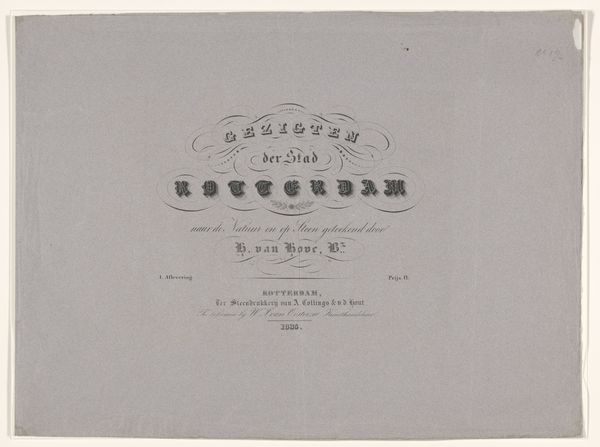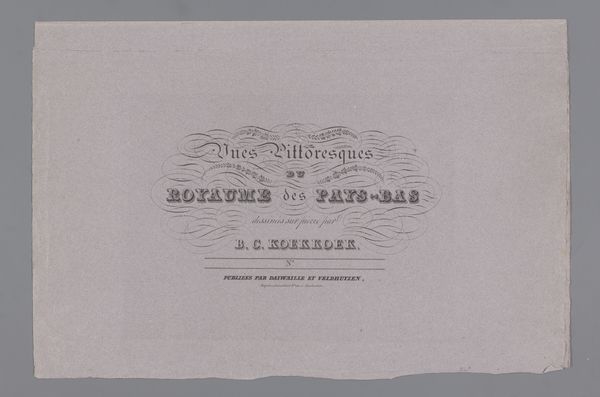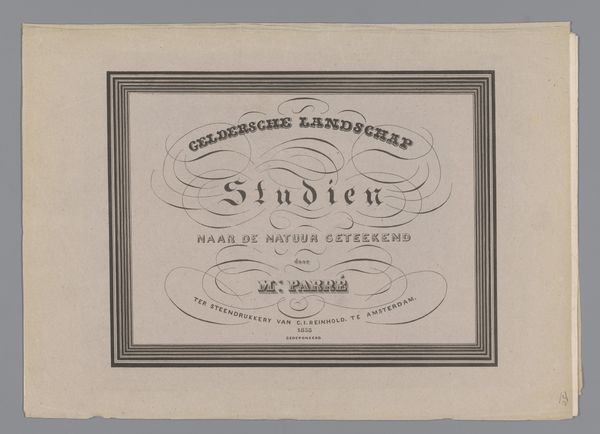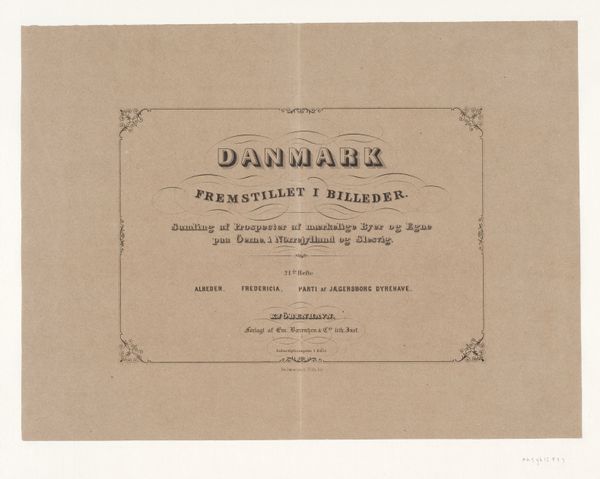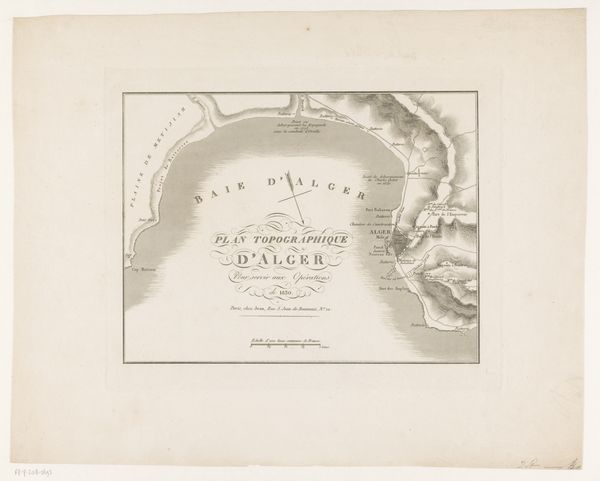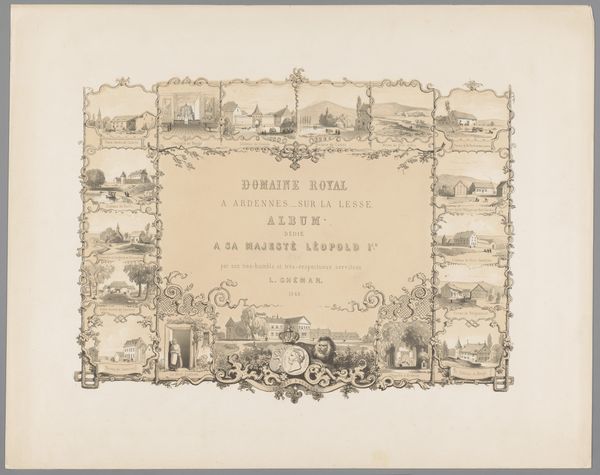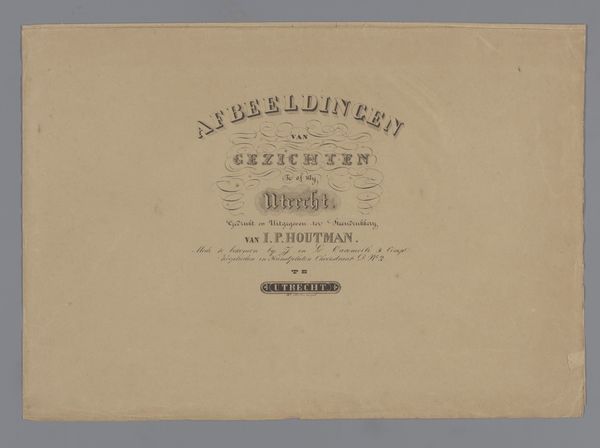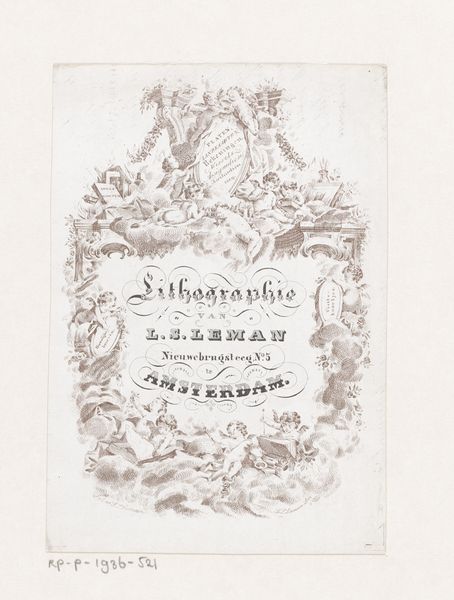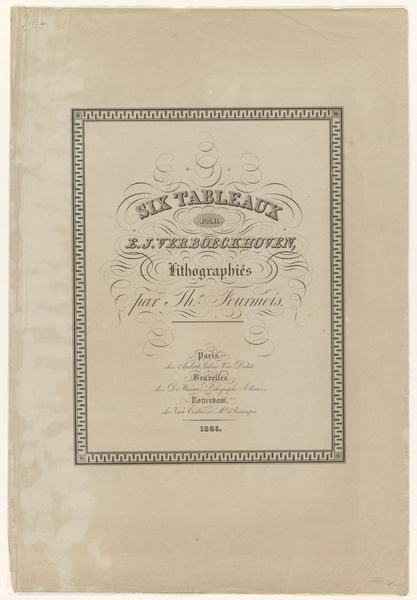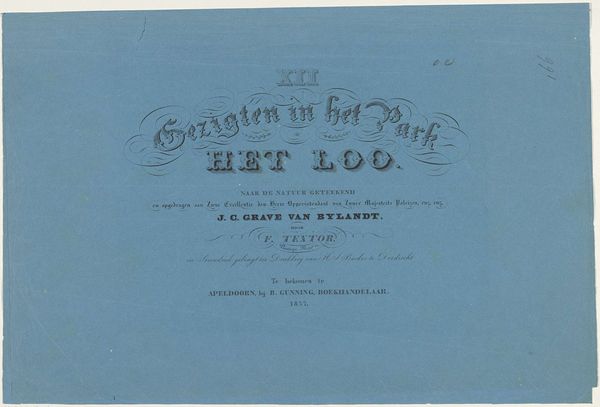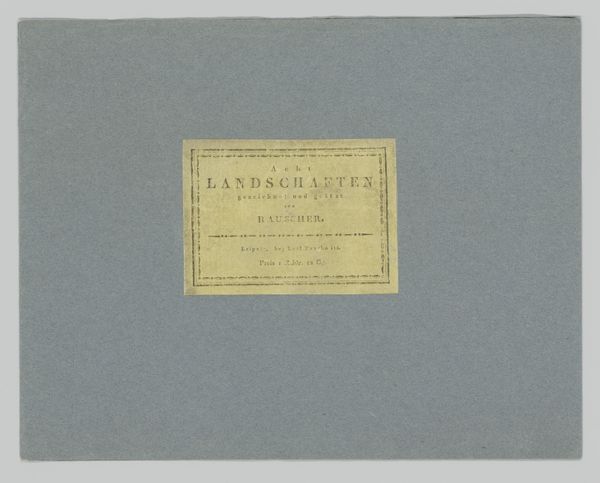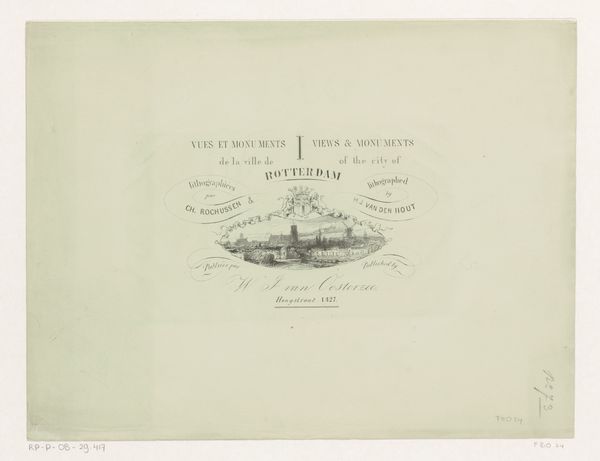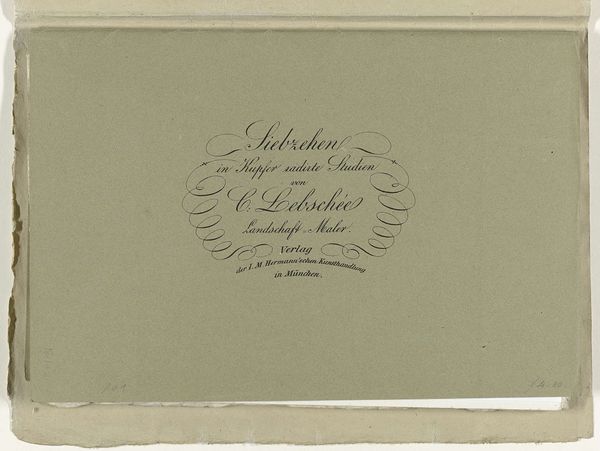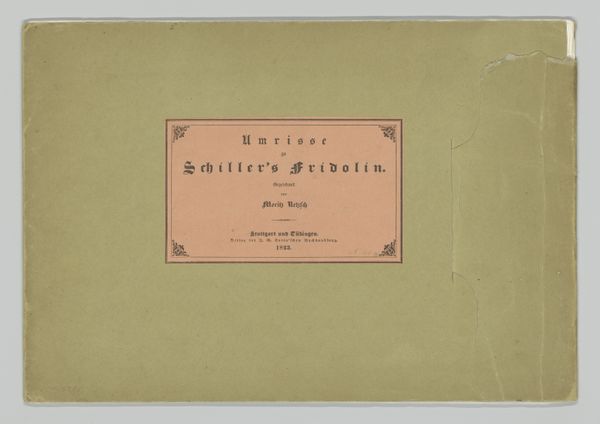
#
photo of handprinted image
#
old-fashioned
#
aged paper
#
parchment
#
old engraving style
#
old fashioned
#
personal sketchbook
#
ink colored
#
sketchbook drawing
#
word imagery
Dimensions: height 295 mm, width 435 mm, height 589 mm
Copyright: Rijks Museum: Open Domain
Curator: Ah, I’m struck immediately by the formal elegance, that pale celadon paper, almost Grecian, supporting the dense typography. There's a real weight to the presentation. Editor: We're looking at the cover for six prints depicting scenes from Holland, dating back to 1836, conceived by Théodore Fourmois. It's part of the Rijksmuseum collection. This particular artifact seems quite representative of the growing print culture of the time. Curator: Print culture, yes. The symmetry is impeccable. Consider how the curling flourishes frame the stark, blocky lettering. The composition is deliberately hierarchical; ‘Six Sujets de la Hollande’ commands visual attention first. There's also the question of process, here, lithography which, as a more painterly medium than engraving, provided a distinctive textured graphic. Editor: I wonder how ‘Hollande’ as a label was perceived in a burgeoning national climate. Were these idealized visions of Dutch life meant to instill pride, or were they marketed to a curious outside audience looking for picturesque scenes? A. Frolling & Cie was the publisher, it looks like, a print shop in Rotterdam at the time. Curator: An interesting avenue of inquiry. Functionally, the typography creates almost an ornamental effect; the swirls add to that sense. Also note the way the various text weights are distributed across the space to achieve overall balance, giving visual weight to each layer of communication without overwhelming the whole. Editor: And of course, Rotterdam’s key geographical importance in maritime trade no doubt aided the dispersal of such print sets. We have a charming tableau crafted and commodified for an expanding marketplace. Was Fourmois aiming at art-for-art's-sake here, or was there a specific clientele, and hence ideology, in mind? The relatively large scale may reflect that; such a compilation of prints would represent a serious expenditure for someone at the time. Curator: We're now looking at more than just visual form, but at the whole political economy of the piece. The image itself serves as a signifier, laden with implications well beyond its neat presentation. Ultimately, this analysis lets us connect aesthetic strategies and social history more deeply. Editor: Absolutely, that dynamic and intersection gives Fourmois' work continued significance today. Thank you!
Comments
No comments
Be the first to comment and join the conversation on the ultimate creative platform.
